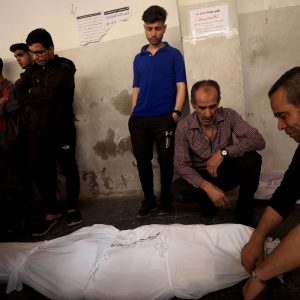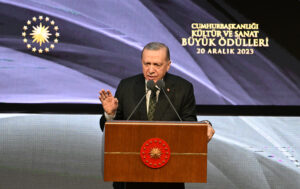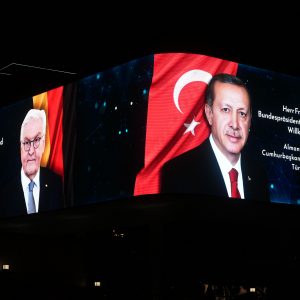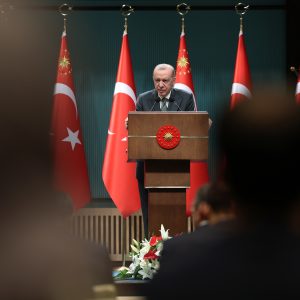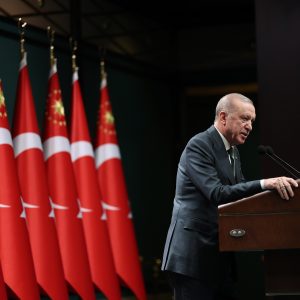Gazan entrepreneur produces traditional Palestinian dress, symbolizing resistance against Israel
GAZA, PALESTINE: Living in the blockaded Gaza Strip, Ibrahim al-Kahlout (42) contributes to the economy by producing traditional embroidered dresses for Palestinian women, which are considered as symbols of Israeli resistance.
With high concentration, Ibrahim al-Kahlout, 42, inspects the work of sewing machines for making the traditional Palestinian women’s dress.
Amid the noise of sewing machines in a workshop in the northern Gaza Strip, Kahlout calls out to one of the workers to remove a large brown cloth adorned with red threads from one of the electric machines.
Al-Kahlout said, “We export the Palestinian thobe (Palestinian traditional dress) to many residents of European countries, the United States and Canada, in addition to exporting it to cities in the occupied West Bank.”
Although the beginnings of weaving the Palestinian dress and its manufacture were purely manual, it has evolved in recent years to produce the dress through modern machines in the factories.
Kahlout explained that the idea of establishing the factory with modern electrical machines resulted from the increasing demand for the Palestinian dress to save time and effort.
He stressed that his factory contributes to the preservation of cultural heritage and its transmission through different generations, as “the traditional dress is a witness to Palestinian history and a protector of national identity.”
For more than 15 years, the Gaza Strip has been suffering from a shortage of electricity, which began after Israel bombed the only power plant in the strip in mid-2006.
Al-Kahlout complained that the power outages in the Gaza strip disrupt the production in his factory.
The dress with embroidery is part of Palestinian heritage, where each region is distinguished by its dress. The dress of the city is different from that of the desert, the dress of each village is different from the rest, and the coastal and mountainous regions are unique in their dress.
The weaving of the Palestinian dress, its embroidery and its colors vary according to the social occasion, between joy and sadness, as well as ages, as each age of women has a different dress form from the other.
In December 2021, the United Nations Educational, Scientific and Cultural Organization (UNESCO) included the art of Palestinian embroidery on its lists of world cultural heritage, at the request of the Palestinian Ministry of Foreign Affairs.
In recent years, the manufacture and wearing of the Palestinian dress dwindled among girls, but this heritage is still present in many Palestinian cities and villages on all occasions. Those residing abroad are also developing great interest in the dress as it is now being promoted as a proud symbol of a historical heritage that should be preserved.
In December 2021, some participants in the “Miss Universe” competition, which was held in Israel, posted pictures on social media platforms wearing Palestinian clothes as “Israeli heritage”.
These images caused an uproar among Palestinians through social media platforms, and Palestinian and Arab activists considered them to come in the context of the “systematic Israeli theft of Palestinian heritage.”
Moreover, over the past years, Israeli media outlets have published more than once picture of Israeli models and flight attendants of the Israeli airline (El Al) dressed as “Israeli”, evoking anger among Palestinians.


